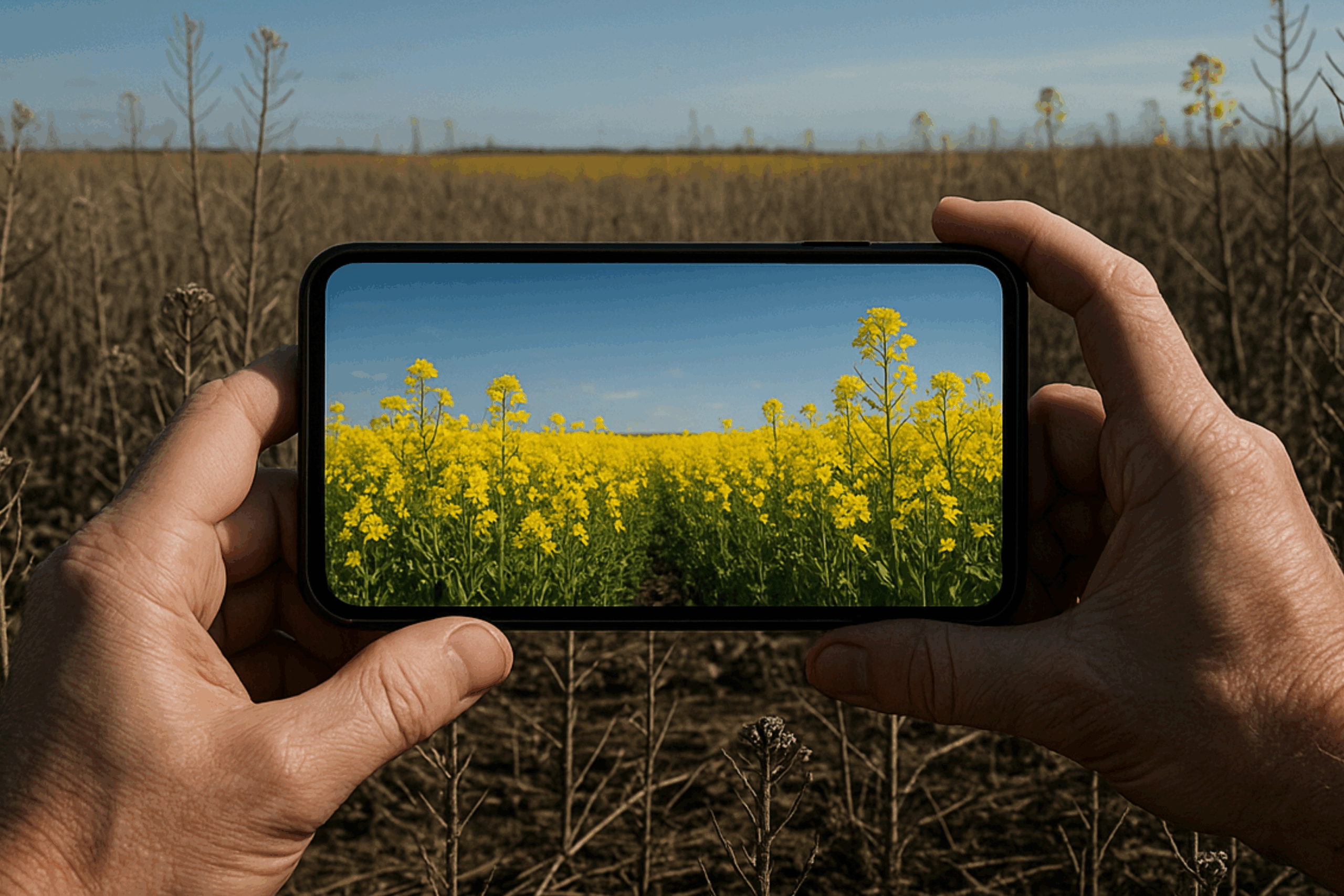Article originally authored by Grain Producers Australia (GPA)
Grain Producers Australia is calling for agri-tourists to stop and think about biosecurity risks and other dangers, before entering grain farms, to try to take selfies in flowering canola crops.
GPA Chief Executive, Colin Bettles, said he understood the temptation to stop and take photographs of golden canola crops, given the spectacular natural imagery on display in grain cropping regions throughout the nation, during the current flowering season.
But he said snapping an Instagram image could leave a long-lasting legacy behind, by causing direct social and economic impacts for farmers, and the local community and national grains industry.
“Tourists need to understand and recognise three key warnings, before trying to capture one of these pictures; respect the farmer’s private property rights; stay out of their crops to prevent biosecurity risks spreading; and park your vehicle safely,” he said.
“First and foremost. It’s illegal to enter someone’s private property – you can’t just walk past the fence line and out into the farmers’ field because that’s considered trespassing.
“Farmers don’t walk into peoples’ homes and start taking pictures of their backyard gardens, so please stop and think before you act. People need to be completely aware of these serious risks – especially biosecurity.”
Mr Bettles said tourists had other safe options to consider and follow, when taking such pictures, to avoid breaking any of these fundamental rules and introducing harmful biosecurity risks.
He said that included taking pictures from safe distances and protected locations, without the need to enter private properties and walking out into crops, for a selfie.
“People might have no idea what sort of biosecurity risks they could be potentially transferring onto a farm – for example weeds, pests and diseases carried on the soles of their shoes, or vehicles,” he said.
“Farmers don’t mind people stopping and taking photos of their crops – and who can blame them? Images of these golden flowering canola crops taken at this time of year (season August-September) are irresistible.
“But you need to stop and think first. People just can’t stop their car in the middle of the road and then step out onto a farmer’s property, into their crops – that’s not only dangerous it’s also trespassing, which is illegal.”
Mr Bettles said some people had been known to drive their cars onto farms and get bogged at times in some places, subsequently leaving farmers (property owners) to step in and help rescue them.
“Vehicles can also carry serious biosecurity risks onto farms – but people would have no idea what might be in their mud guards, or on other parts, never mind on the soles of their shoes,” he said.
“For the sake of a few Instagram images, we can’t afford to ignore these risks and cause permanent damage.
“Before entering a farm, people need to be aware of these important safety measures and take proper precautions – especially understanding and respecting biosecurity protocols.
“Tourists can still visit these areas and take great photos to capture lifelong memories, without entering private properties and leaving a biosecurity disaster behind that farmers will have to live with, long after.”

GPA Chair, Barry Large, said GPA takes biosecurity seriously, as part of our long-standing representative responsibilities for all Australian grain producers, and across the $27 billion national grains industry.
Mr Large said GPA’s responsibilities for growers on biosecurity protections included delivery of the award-winning Grains Farm Biosecurity program, with Plant Health Australia (PHA).
Developed in 2007, the Grains Farm Biosecurity Program improves the management of and preparedness for, biosecurity risks in the grains industry at the farm and local industry level. The program has officers in five states: New South Wales, Queensland, South Australia, Victoria and Western Australia, he said.
Mr Large said the Grains Farm Biosecurity Program Officers (GBOs) helped facilitate increased biosecurity protections by distributing important resources directly to grain producers, such as Farm Biosecurity Signs, which can help warn tourists – and other visitors – about serious risks, such as those detailed here.
“GPA encourages everyone to contact their GBOs directly and access these resources, to help improve our biosecurity protections and standards. This ultimately protects our industry’s productivity which includes an anticipated six million tonne canola crop this year, valued at about $5.2 billion,” he said.
“We can’t afford to lose this value in an instant, and cause permanent damage to our farm productivity and prosperity, just for the sake of an Instagram image.”
Mr Large said GPA had also engaged with PHA and other industry groups, governments and biosecurity experts, to develop the Australian Grains Industry Biosecurity Plan which helps prevent, prepare for and respond to biosecurity risks and emergencies.
“The Biosecurity Plan for the Australian Grains Industry 2023-2028 HERE identifies plant pests and the potential threats to the grains industry, activities to reduce biosecurity risk for investment and processes for incursion responses,” he said.
GPA also reinforced these important messages and awareness of biosecurity protections, in a story broadcast on SBS television yesterday HERE which also highlighted the importance of agri-tourism, to regional communities.
This news feature showed a property in Victoria that’s providing a dedicated cropping zone where tourists can visit to capture these images of flowering canola crops, while preventing/minimising risks, including biosecurity.
Important PHA-GPA-GBO resources, such as those below, can be accessed HERE via the Grains Farm Biosecurity Program website.
· Farm Biosecurity Signs
· Farm Biosecurity Plan For Grain Producers
· Visitor Biosecurity Risk Assessment Tool
· Effective Farm Washdown Facilities
 45 mins
45 mins National
National